
The Martian Sunset
By Marcelo

20 Aug, 2023

As the sun began to dip over the Martian horizon, a brilliant spectacle of colors started to unfold. Blues, purples, and oranges danced in the twilight, painting an alien yet beautiful scene.

Mars, a planet known for its vibrant red terrain, took on a whole new persona under the setting sun. The crimson soils reflected hues of gold and silver, lending the planet an ethereal glow.

Suddenly, there was a low rumble, followed by a soft hum. A rover, affectionately named "Red Wanderer," rolled into the scene.
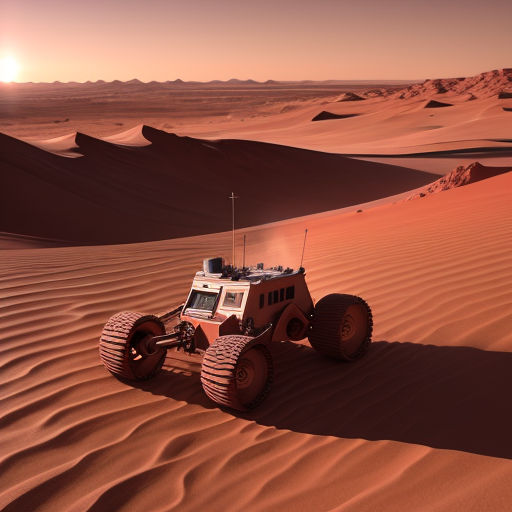
Equipped with cutting-edge technology, the Red Wanderer was a silent observer of the Martian landscapes. It moved slowly but steadily across the terrain, recording every moment of this spectacular sunset.
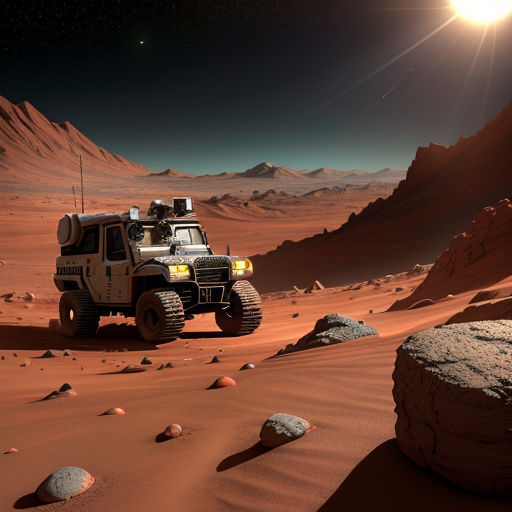
It maneuvered expertly over rocks and dips in the terrain. Unlike a tourist capturing a quick snapshot, the rover was a devoted artist, capturing every detail with painstaking precision.

The Martian winds whipped up dust around the rover, but it remained undeterred, its equipment whirring and clicking as it continued its mission.
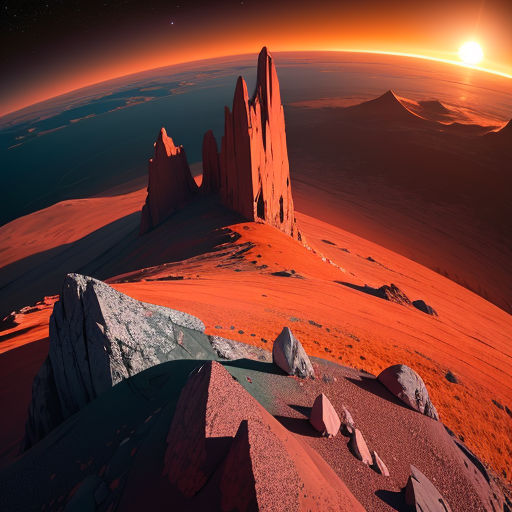
As the darkness began to sweep over Mars, the sunset's radiance was replaced by a starry spectacle above.

But the Red Wanderer did not rest. Illuminated by starlight, it continued its work, tirelessly exploring the Martian night.

Topographic patterns and mineral compositions were revealed under the rover's nocturnal scans. These, too, were a part of the Martian narrative, and the Red Wanderer preserved them all.

As it surveyed the terrain, the rover’s body cast long, eerie shadows on the Martian landscape, creating a ghostly ambiance.

Whirling columns of Martian dust rose under the starlit sky, dancing in mysterious rhythms, forming and deforming.

The Red Wanderer was a solitary figure amidst this Martian ballet of dust and stars. It surveyed, observed, and documented, adding to humanity's understanding of this alien world.
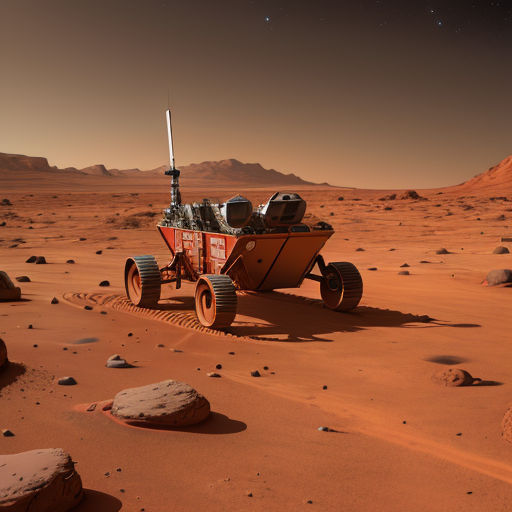
Mars slept under the cloak of night, but the Red Wanderer did not. A robotic embodiment of human curiosity, it tirelessly shed light on the secrets of the red planet.

As the night wore on, the Martian landscape evolved. The vibrant hues of the sunset were replaced by a palette of silver and black under the starlit sky.

The rover carved a path through this Martian dream, a tiny, determined explorer driven by a quest for knowledge.

Finally, after a night of exploration, the Red Wanderer paused, positioning itself to witness the sunrise. The night's work was done, but a new day awaited.

The Martian dawn bloomed in a resplendent spectacle of light, washing away the night's shadows. The icy blue sunrise was the perfect counterpoint to the fiery sunset.

As the Red Wanderer bathed in the rising sun, its metallic body shimmered in the dawn’s ethereal light. It hummed quietly, preparing for another day of exploration.

And so, in an endless cycle, the rover continued its mission of discovery, painting a vivid picture of Martian sunsets and sunrises, of rocks and dust, of day and night.
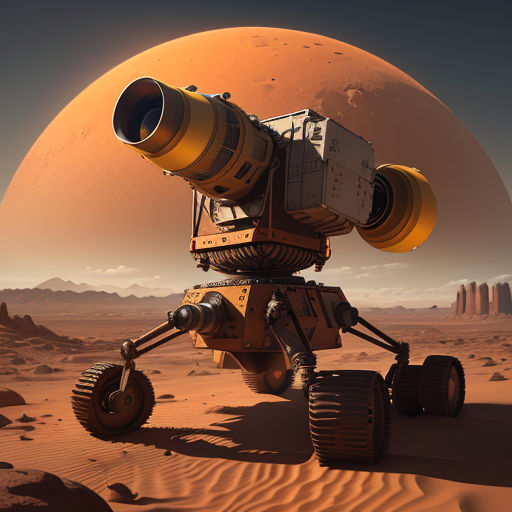
The Red Wanderer was more than a rover; it was a silent artist, an observer, a historian, and a pathfinder. It was a tangible connection between two worlds—Earth and Mars.
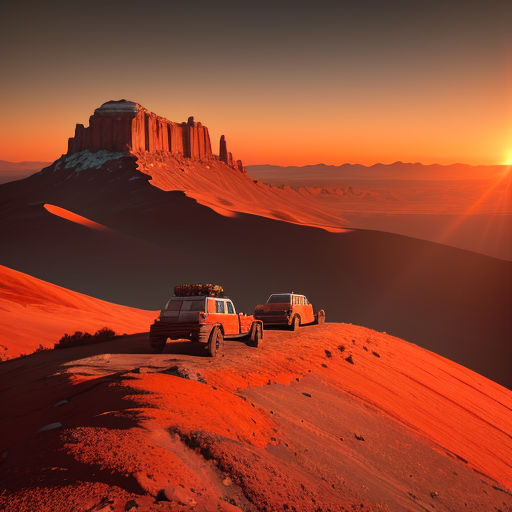
High-resolution images of Martian sunsets started pouring into servers back on Earth. Scientists marveled at the breathtaking details captured, a testament to the Red Wanderer's silent work.
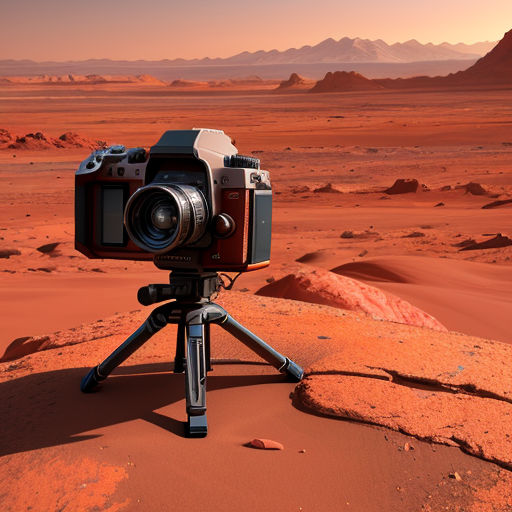
With every Martian sunset and sunrise captured, a part of Mars's story was etched into human knowledge.

It was a testament to human curiosity, perseverance, and the ingenuity to build a machine that could traverse an alien landscape and capture its sublime beauty.

The images were like poetry written in colors and light, revealing the enthralling beauty of an alien world, as seen through the lens of a machine, and interpreted by the minds of human beings.

Every pixel of the Martian sunset was a verse in this interplanetary poem, every grain of Martian dust a metaphor, every star a rhyme. And the Red Wanderer was the silent poet.

As the rover continued to explore Mars, it left behind a trail of impressions, stirring deep emotions within the hearts of people back on Earth.
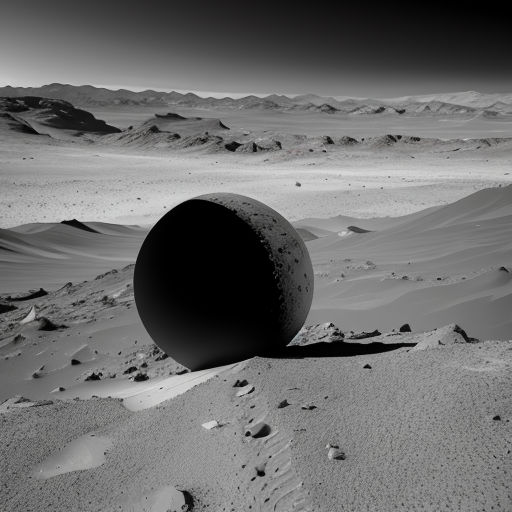
The images came to symbolize not just the Martian landscape, but human desire to explore and understand. They served as a reminder of our place in the cosmos, and our endless endeavor to reach out to the unknown.
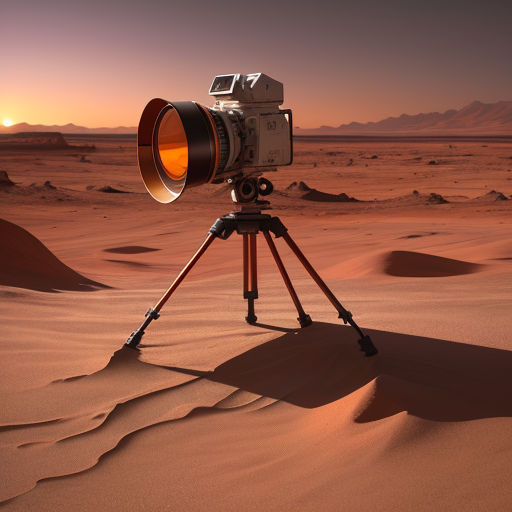
The Martian sunset images were a mosaic of human dreams and aspirations. They bore witness to our spirit of exploration, our technological prowess, and our artistic expression.
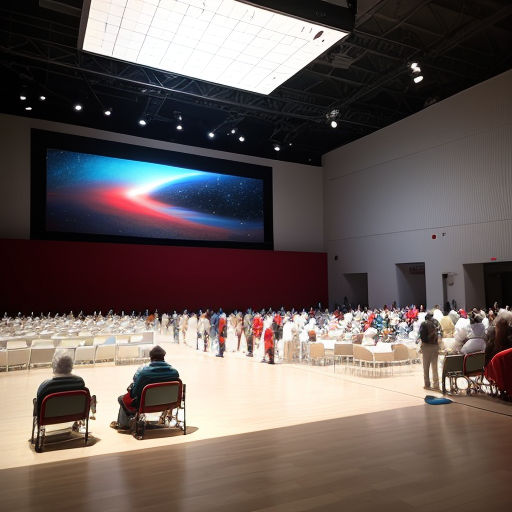
As the Red Wanderer's images made their way into museums, schools, and homes, they sparked a newfound interest in space exploration among young and old.
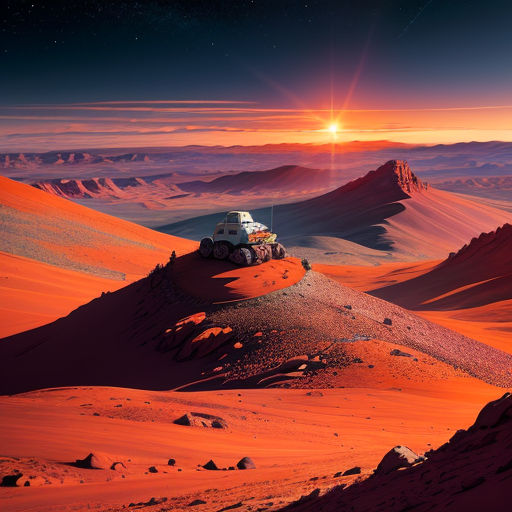
Through a robot's lens, the world had seen the alien beauty of a Martian sunset. What once seemed distant and unreachable had become a familiar sight.

As the Red Wanderer rolled on, a silent ambassador of human curiosity, it continued to map the Martian landscape, enchanting the world with each new discovery.

The rover and its Martian sunsets became a symbol of hope, a testament to human spirit and our endless quest to reach beyond our world, a stepping stone towards the vast expanse of the cosmos.

So, each Martian sunset captured by the Red Wanderer was not just an image—it was a story of courage, curiosity, and human spirit. A story that continued to unfold, one sunset at a time.

Mars and its sunsets were no longer mere dots in the night sky. They were a part of the human story, a reminder of our cosmic journey and our aspirations for the future.
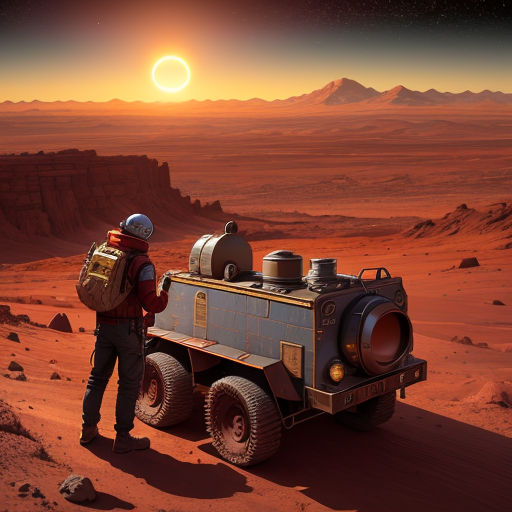
The Red Wanderer's mission continued, a tireless journey across Martian terrains, capturing magical sunsets, and bringing an alien world closer to the human heart.